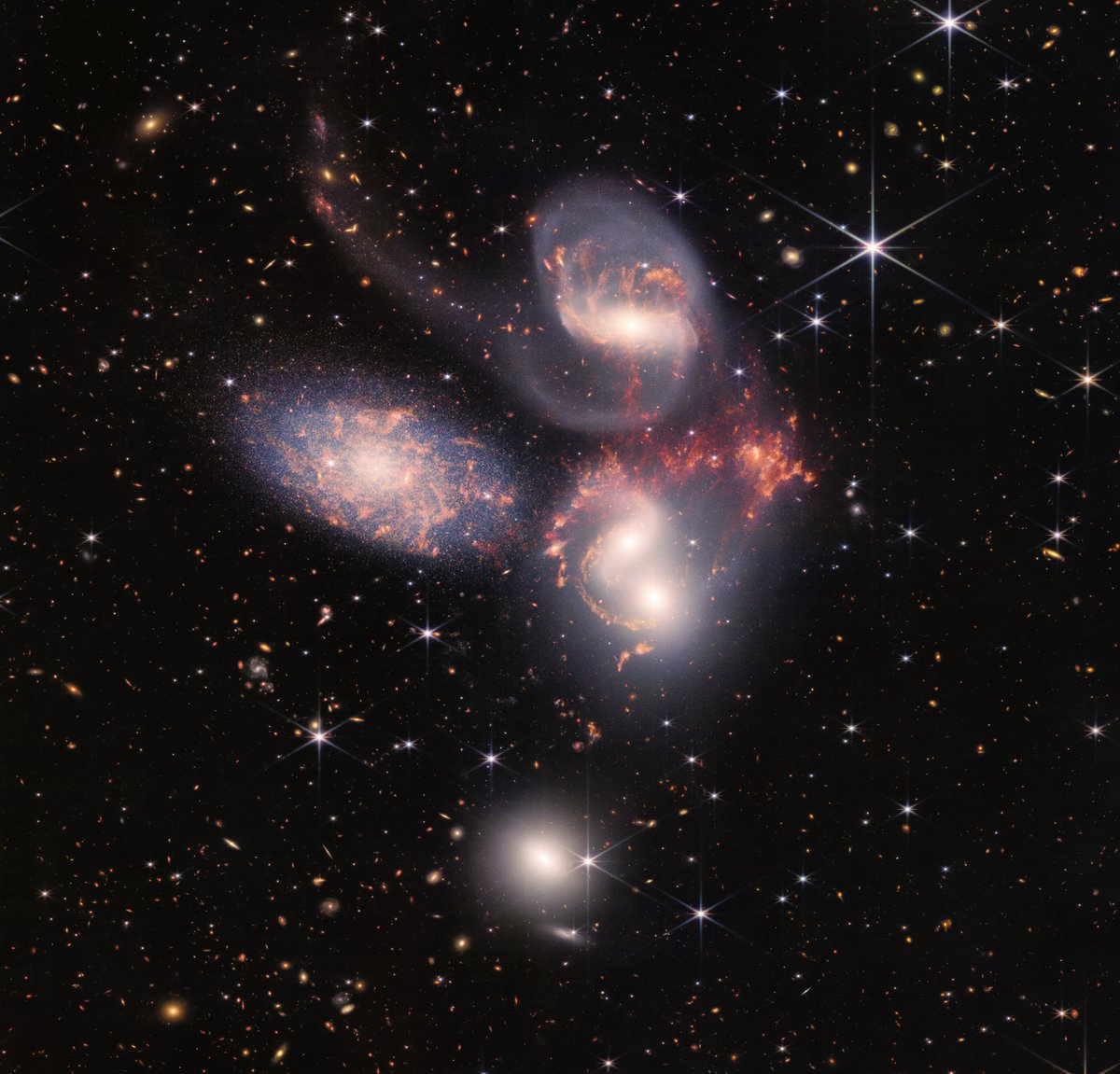
📢#Webb reveals details of the Southern Ring planetary nebula that were previously hidden, helping us better understand how stars evolve and transform their environments. Read more here: esawebb.org/news/weic2207/ or below 👇#WebbSeesFarther 

Some stars save the best for last 💥 Planetary nebulae are the shells of gas and dust ejected from dying stars — making for a spectacular view. Since they exist for tens of thousands of years, observing such a nebula is like watching a movie in exceptionally slow motion 👇
Two stars, which are locked together in a tight orbit, shape the local landscape of this planetary nebula. Webb's infrared images feature new details in this complex system 👇
The bright star at the centre of this image is not actually the source of the nebula, but it plays a role in sculpting the surrounding nebula. 🔎 Zoom in & you'll see a second star, barely visible at lower left along one of the bright star’s diffraction spikes✴️👇 

You can see this star better in this image from Webb’s #MIRI Instrument, which shows for the first time that the second star is surrounded by dust. This star has ejected at least eight layers of gas and dust over thousands of years 👇 

Each shell is an episode during which the fainter star lost some of its mass. The widest shells of gas toward the outer areas of the image were ejected earlier. Those closest to the star are the most recent. Scroll left & right to spot differences 👇
These images also reveal a cache of distant galaxies in the background. Most of the multi-coloured points of light seen here are galaxies — not stars.
• • •
Missing some Tweet in this thread? You can try to
force a refresh











